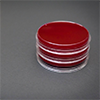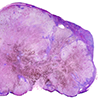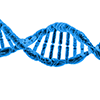|
Fluid type
|
Clinical Indication
|
Analyses available
|
Sample Container
|
Comments
|
|
|
|
|
|
|
|
Ascitic Fluid
|
? cirrhotic or
malignant
|
Albumin
Cholesterol
Triglycerides
LDH
|
Plain universal
|
Serum albumin should be requested simultaneously measured for comparison.
|
|
? chylous ascites
|
Chylomicrons
Cholesterol
Triglycerides
|
Plain universal
|
|
|
? SBP
(spontaneous bacterial peritonitis)
|
Total protein
pH
|
Plain universal
See comment
|
pH cannot be performed in a plain universal tube. Sample must be collected anaerobically into a lithium heparin tube and analysed on a blood gas analyser using a clot filter.
|
|
? pancreatic fistula
? pancreatitis
|
Amylase
|
Plain universal
|
Serum amylase should be measured simultaneously for comparison. A high ascitic:serum amylase ratio is suggestive of a pancreatic origin.
|
|
? tubercular ascites/
tuberculous peritonitis
|
Glucose
|
Fluoride oxalate
(grey top)
|
|
|
|
|
|
|
|
|
Chest Drain Fluid
|
? chylothorax
|
Chylomicrons
Cholesterol
Triglyceride
|
Plain universal
|
|
|
|
|
|
|
|
|
CSF
|
? bacterial meningitis
|
Total protein
Glucose
Lactate
|
Plain universal
Fluoride oxalate
(grey top)
|
|
|
? Subarachnoid
haemorrhage
|
CSF bilirubin and oxyhaemoglobin (Xanthochromia)
Total protein
|
Plain universal
(protect sample from light)
|
Do not use pod system to send sample to lab.
Samples must be received protected from light as light will cause degradation of bilirubin in the sample.
Serum total protein and bilirubin should be measured simultaneously to support interpretation in equivocal cases.
|
|
? congenital disorder
? cerebral ischaemia
|
Lactate
|
Fluoride oxalate
(Grey top)
|
Raised levels of CSF lactate may occur with severe cerebral hypoxia or genetic lactic acidosis, intracranial haemorrhage, bacterial meningitis and epilepsy.
|
|
? brain metastases
|
AFP, HCG, LDH
|
Plain universal
|
These analyses are not performed in-house and will be referred to Charing Cross Hospital. Turnaround may be up to 7 days.
|
|
? neurosarcoidosis/
monitoring
|
ACE
|
Plain universal
|
These analyses are not performed in-house and will be referred to Queen’s Square Neurometabolic Laboratory. Turnaround may be up to 10 days.
Please note, this test has not been clinically validated for diagnosis and monitoring of neurosarcoidosis and is therefore not UKAS accredited. This utility of this test should therefore be considered before requesting. Activity may be increased if blood-brain barrier impairment leads to passage of serum proteins (including serum ACE) or blood contamination.
|
|
? Alzheimer’s Disease
? neurodegeneration
|
Beta-2-transferrin
Amyloid Beta42 and Amyloid Beta40 ratio
Total Tau
Phospho-Tau181
S100B
Neurofilament light chain
|
Polypropylene tube
|
These analyses are not performed in-house and will be referred to Queen’s Square Neuroimmunology Laboratory. Turnaround may be up to 15 days.
The Duty Biochemist must be contacted via This email address is being protected from spambots. You need JavaScript enabled to view it. at least 1 day prior to sample collection. Polypropylene tubes must be collected from the Duty Biochemist in advance. Each individual test requires at least 500 µL sample, therefore discussion regarding sample volume needed is essential.
|
|
Diagnosis
and monitoring of
inherited
neurotransmitter
disorders
|
CSF Neurotransmitters
|
Specialist neurotransmitter tubes
|
These analyses are not performed in-house and will be referred to Queen’s Square Neurometabolic Laboratory. Turnaround may be up to 35 days.
Please contact Duty Biochemist (This email address is being protected from spambots. You need JavaScript enabled to view it.) at least 1 week prior to the sample being collected. Specialist tubes must be ordered from the referral lab and samples must be frozen on dry ice at the bedside. Requests must be accompanied by a specific referral lab form (in addition to the UHB request form) which be requested along with the tubes.
A paired serum prolactin level may be useful. Patients should ideally be off any L-DOPA medications for 7 days prior to CSF collection.
|
|
? narcolepsy with cataplexy
|
Orexin/Hypocretin
|
Plain universal
|
These analyses are not performed in-house and will be referred to Oxford for analysis. Turnaround may be up to 42 days.
|
|
|
|
|
|
|
|
Nasal/Ear Fluid
|
? CSF leak
(rhinorrhoea/
otorrhoea)
|
Tau protein
(Beta-2-transferrin)
|
Plain universal
|
These analyses are not performed in-house and will be referred to Sheffield protein reference unit. Turnaround may be up to 10 days.
|
|
|
|
|
|
|
|
Cyst Fluid
|
? thyroid tissue/
metastatic thyroid cancer
|
Thyroglobulin
|
Plain universal
|
Requires discussion with Duty Biochemist. Please email This email address is being protected from spambots. You need JavaScript enabled to view it. or phone 0121 371 6543.
|
|
|
|
|
|
|
|
Drain Fluid
|
? contains urine
|
Urea
Creatinine
|
Plain universal
|
Comparison of fluid urea and creatinine with serum will identify significant contamination with urine
|
|
?post operative pancreatic fistula
|
Amylase
Bilirubin
|
Plain universal
|
A high amylase and bilirubin in drained fluid suggests a leak of pancreatic fluid e.g. after pancreatic resection.
|
|
|
|
|
|
|
|
Gastric Aspirate
|
? reflux
?achlorhydria
|
pH
|
Plain universal
|
Occasionally gastric pH may be requested in patients suspected of intestinal reflux or achlorhydria. Normally the fasting gastric pH is about 1-2.
|
|
|
|
|
|
|
|
Pancreatic Cyst Fluid
|
Differentiation of pancreatic cysts types
|
CEA
CA 19-9
Amylase
Glucose
|
Plain universal
Fluoride oxalate (grey top)
|
Pancreatic CEA may be useful in aiding differentiation between benign cysts and mucinous pancreatic cysts with an increased risk of malignancy.
Please note, tumour markers are non-specific and should be used in conjunction with cytology and imaging.
|
|
|
|
|
|
|
|
Pleural Fluid
Four types of fluids can accumulate in the pleural space:
Serous fluid (hydrothorax)
Blood (haemothorax)
Chyle (chylothorax)
Pus (pyothorax or empyema)
|
? transudate or
exudates
|
Total Protein
LDH
(measure serum protein and LDH simultaneously)
|
Plain universal
|
A transudate fluid is produced through pressure filtration without capillary injury while exudate is "inflammatory fluid" leaking between cells.
Most common causes of pleural exudates are bacterial pneumonia and malignancy. Most common causes of pleural transudates are left ventricular failure and cirrhosis.
TP <25g/L indicates transudate
TP>35g/L indicates exudate
Light’s criteria applies to pleural fluid TP between 25 and 35g/L.
A fluid is an exudate if any of the following apply:
- Ratio of fluid protein to serum protein is >0.5
- Ratio of fluid LDH to serum LDH is >0.6
- Pleural fluid LDH is > 2/3rds the upper reference limit for plasma LDH.
|
|
? infected
|
pH
|
Lithium heparin (green top)
|
This is part of British Thoracic Society’s guidelines for differentiating infective from non-infective pleural effusions. pH can only be measured on a fresh specimen collected anaerobically using a dedicated blood gas analyser. At QE, this analyser can be found on W513 (respiratory). Suggest contact the POCT team to discuss prior to sample collection.
|
|
? chylothorax
|
Chylomicrons
Cholesterol
Triglyceride
|
Plain universal
|
Visual inspection for chylomicrons required.
|
|
? pancreaticopleural fistula/oesophageal rupture/malignancy
|
Amylase
|
Plain universal
|
Serum amylase should be measured for comparison. A level that is higher in pleural fluid compared to serum will aid differential diagnosis.
|
|
? parapneumonic effusion/tuberculosis/
malignancy/rheumatoid arthritis.
|
Glucose
|
Fluoride oxalate (grey top)
|
Pleural fluid glucose is not solely diagnostic but may be useful in aiding differential diagnoses. A low pleural fluid glucose may suggest exudative effusions such as infections, tuberculosis, rheumatoid arthritis or malignancy.
|
|
|
|
|
|
|
|
Saliva
|
? Cushing’s syndrome/
Overnight dexamethasone suppression test
|
Salivary Cortisol
|
Sarstedt salivette (preferred)/
Passive drool into plain universal
|
Saliva specimens should be collected using a Sarstedt cortisol salivette (these can be requested from the Specialist testing laboratory by contacting the Duty Biochemist). Saliva collected into a plain container by passive drool is also acceptable.
Recommend collection of late night salivary cortisol on two different occasions to aid initial diagnosis of Cushing’s syndrome.
|
|
|
|
|
|
|
|
Synovial Fluid
|
N/A
|
N/A
|
|
Refer to Microbiology
|
|
|
|
|
|
|
|
Urine pH
|
? cause of metabolic acidosis
|
pH (UPH)
|
|
In patients with a metabolic acidosis and suspected renal tubular acidosis, urine pH measurement is indicated. Please note, the reliability of a single spot urine pH measurement is limited. An early morning sample or testing after an acid load is more accurate. Urinary tract infections may also mimic distal RTA by causing a high urine pH. Measurement of serum bicarbonate alongside urine pH is most useful for interpretation.
|







